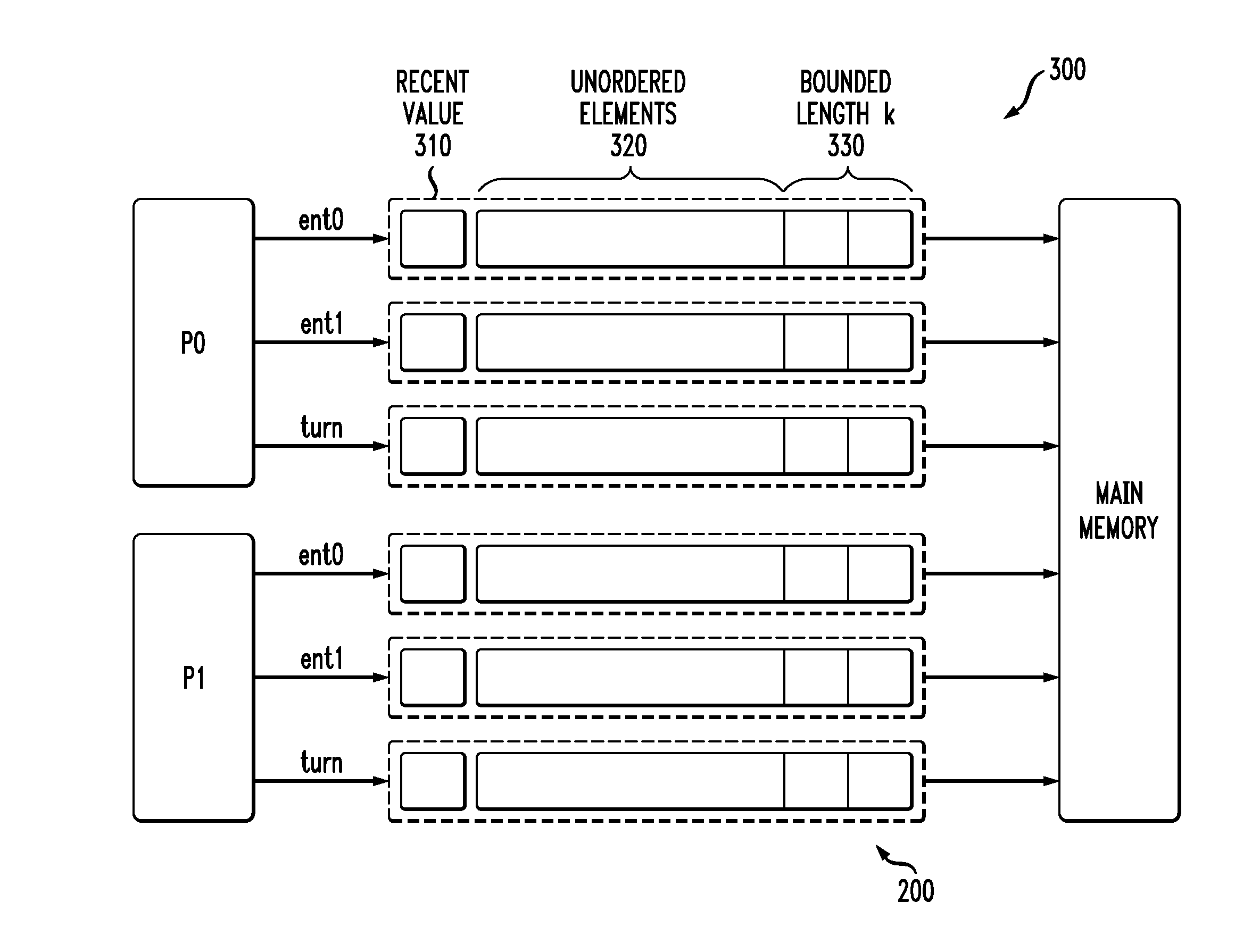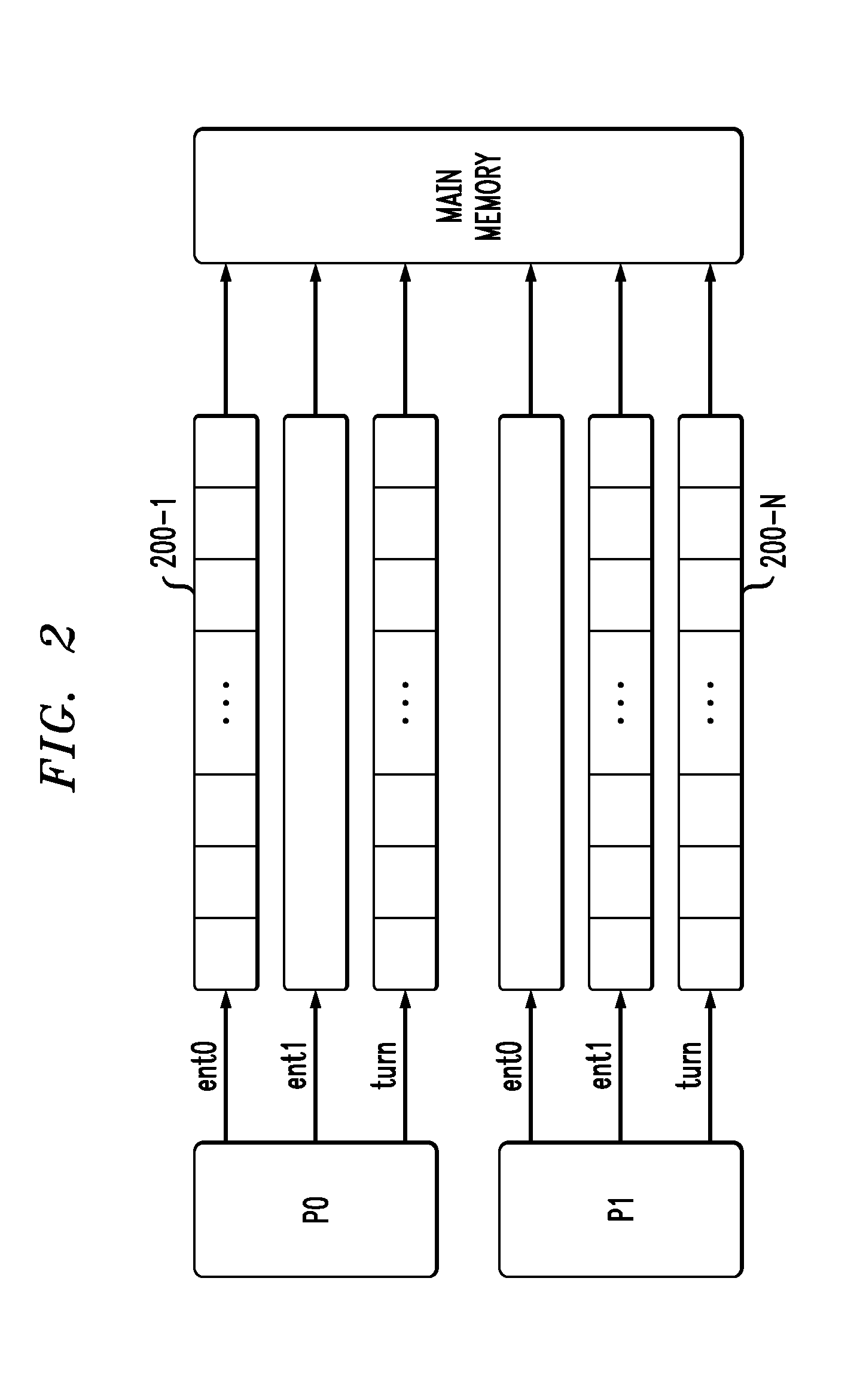Automatic Verification and Synthesis for Weak Memory Models
- Summary
- Abstract
- Description
- Claims
- Application Information
AI Technical Summary
Benefits of technology
Problems solved by technology
Method used
Image
Examples
example
[0093]Motivating Recency and Order—Next, an example illustrates why maintaining recency and order is important for verification and inference. Consider a naive set abstraction for the store buffers, and a version of Peterson's algorithm with fences shown in FIG. 1. Under standard concrete semantics of PSO, those fences guarantee that it is impossible for both processes to be concurrently executing line 13. Consider an abstract memory model where order and recency are not maintained, that is, only Sp(x) is maintained without maintaining lp(x) and Hp(x). Then, it cannot be shown that the algorithm is correct. Consider the following execution:[0094]1. Initially both processes start with empty buffers, and ent0=entl=turn=0.[0095]2. Process 0 runs through one iteration of the outer loop (executes lines 1-13 inclusively), without performing a flush.[0096]3. Process 0 then tries to enter the critical section again and executes lines 1-3 inclusively. At this stage, S(p0)(ent0)={true, false}...
PUM
 Login to View More
Login to View More Abstract
Description
Claims
Application Information
 Login to View More
Login to View More - R&D
- Intellectual Property
- Life Sciences
- Materials
- Tech Scout
- Unparalleled Data Quality
- Higher Quality Content
- 60% Fewer Hallucinations
Browse by: Latest US Patents, China's latest patents, Technical Efficacy Thesaurus, Application Domain, Technology Topic, Popular Technical Reports.
© 2025 PatSnap. All rights reserved.Legal|Privacy policy|Modern Slavery Act Transparency Statement|Sitemap|About US| Contact US: help@patsnap.com



